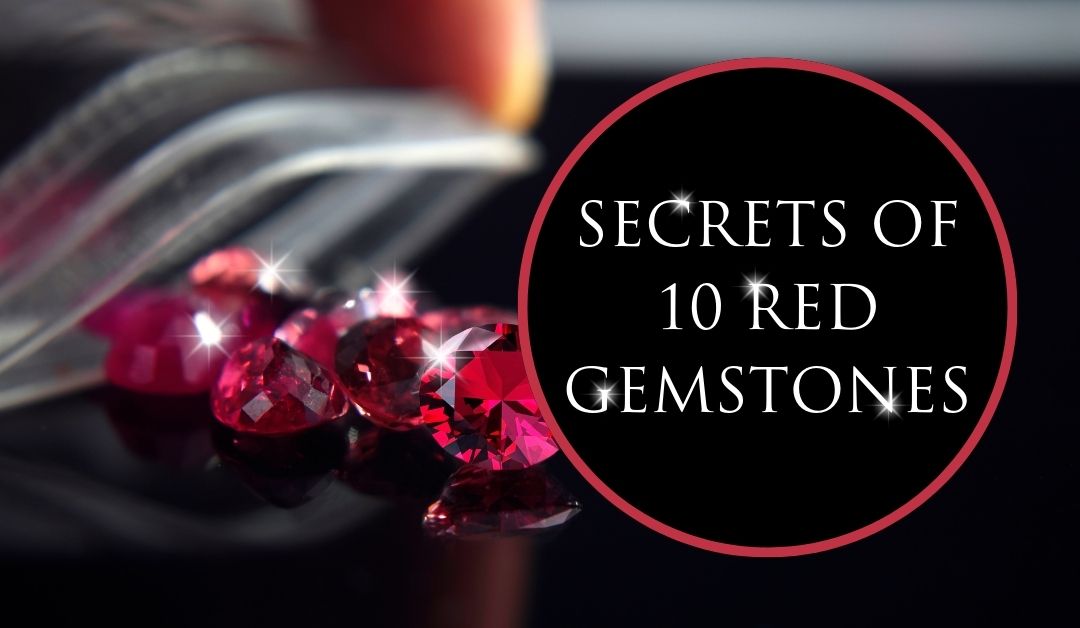
When we think about a red gem, the first thing we may think about is the infamous red ruby. No doubt, historically ruby is one of the most important red coloured gemstones and still is today. As the demand for this beautiful, rare and meaningful gem increases, the value (and price) is increasing too!
While the demand for rubies is still on the rise, consumers are increasingly looking for alternatives as well. In this article, we will be introducing the top 10 red gemstones in the market.
One of the most distinguished gemstones in the market, ruby is the king of coloured stone. Thought to be discovered as early as 2500 BCE in Mogok, Myanmar (used to be known as Burma), very often the largest rubies will be sent directly to the Burmese ruler to become his property. Ruby’s red hue can be so saturated, almost blood-like that it was linked to life itself and it is known as “Pigeon’s Blood” in the market.
Apart from its highly sought-after colour, ruby stands as the second hardest natural gemstone of 9 at the Mohs Hardness Scale. With no cleavage planes or structural weakness, it is exceptionally durable for everyday wear.
Today top quality rubies are getting scarce. Intense colouration requires the correct traces of chromium within its atomic structure, and moreover rubies are often moderately included with impurities that compromise its clarity. Therefore, heat treatment (a treatment accepted in the trade as long as it has been disclosed) is commonly applied on low to medium ranged quality rubies to provide more supply in the trade.
 |
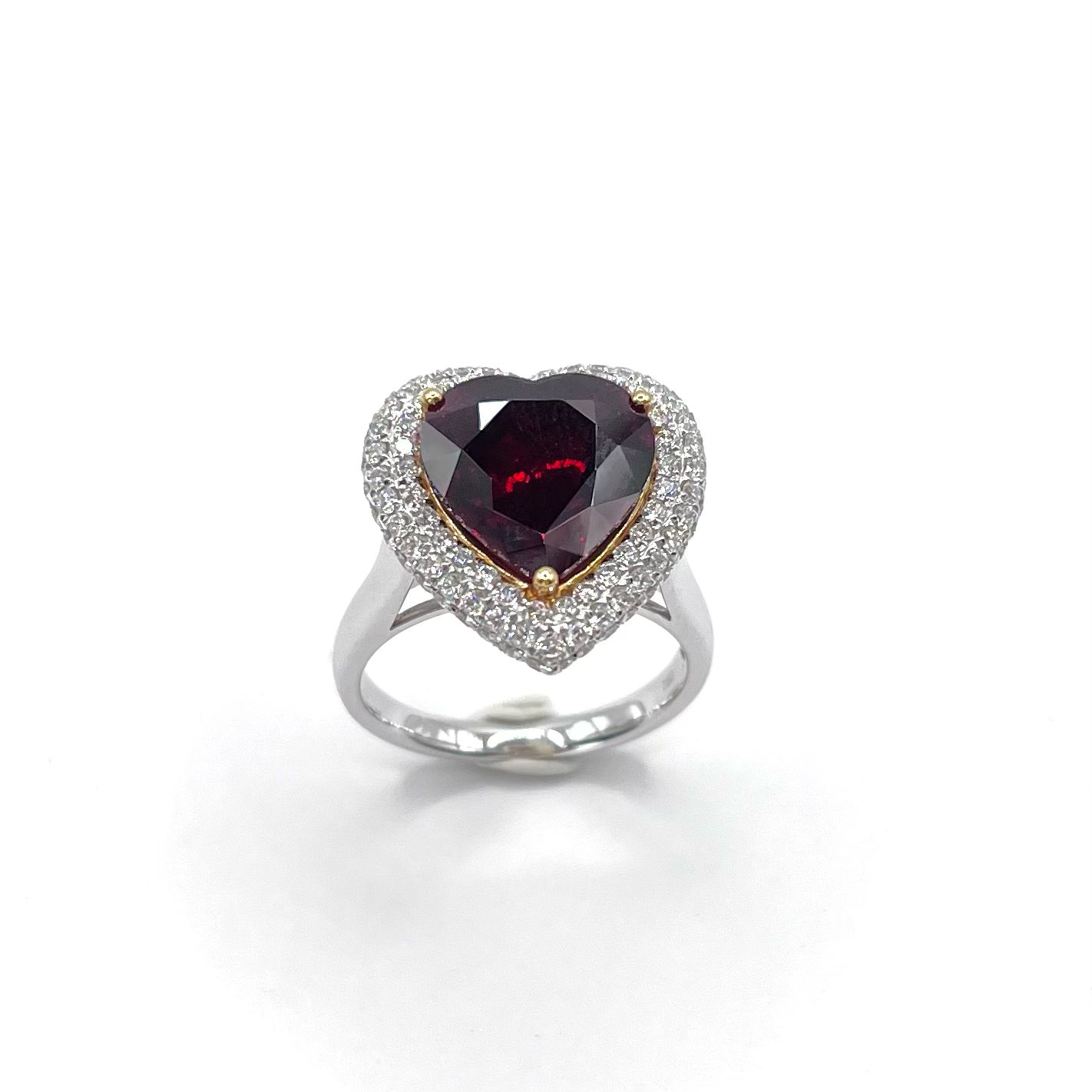 |
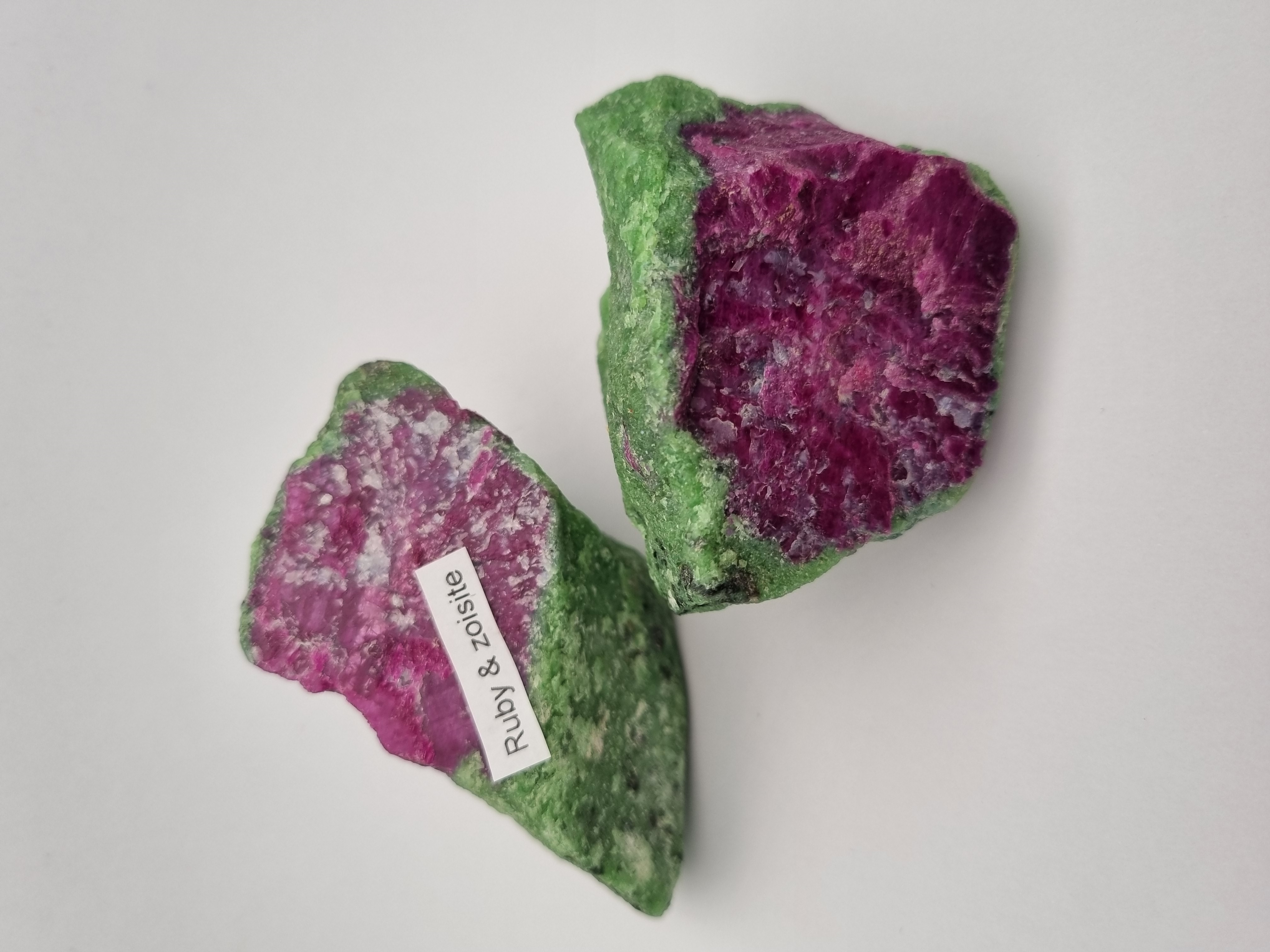 |
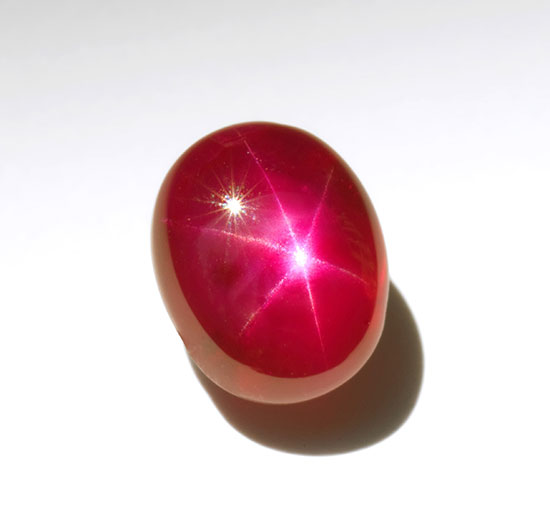 |
| Left to right: Rough rubies from Afghanistan, Vietnam and Myanmar. |
4.11 carat heated ruby from Madagascar set in 18k white gold and diamonds. |
Rubies can be formed with other minerals such as zoisite too. In this picture, the ruby (purplish-red) is part of the zoisite material (from Tanzania). Such gem materials are often carved into various animals or symbols | A 5.18 carats Star Ruby from Myanmar. |
Spinel is the one gemstone that could compete with ruby in terms of colour intensity. Constantly subjected to misidentification throughout history, spinels were relatively unknown and underappreciated. It is used to be mined in the same ancient locality of Badakhshan, the same place where the infamous “Black Prince Ruby” was discovered.
Commonly spinels are found red, having the same trace elements of chromium as ruby that causes its colour. Besides red, other colours are also available such as violet, purple, blue, pink, grey, black, and colourless. For being singly refractive and relatively clean gem, spinel can be quite brilliant.
Now, one thing is for sure, spinel is starting to get its limelight. As more exposure for fine spinel to the market, demand increases and so does its price. Some spinel varieties can be quite rare too, for example the blue variety of cobalt and gahnospinel, as well as the red/pink Jedi spinel. Overall, this gem is the ultimate alternative to ruby.
 |
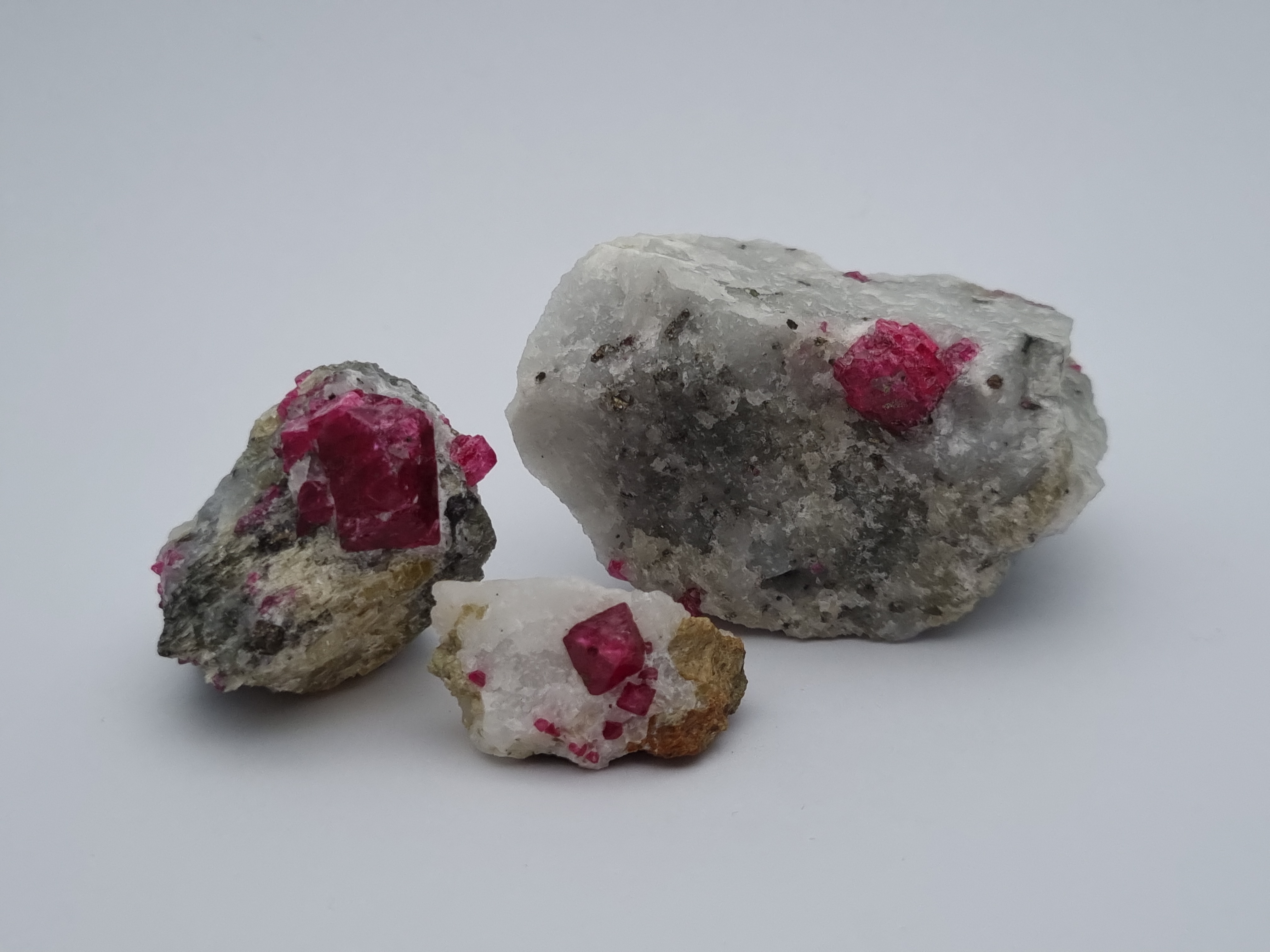 |
 |
 |
| Rough spinel crystals seen in octahedral shapes. From left to right: Rough spinel from Thailand, Myanmar (Mogok), Myanmar (Mogok, “Star of David”). | Rough Spinels in marble and pyrite matrix from Myanmar. | An approximately 2 carats “Mahenge” Spinel, Africa. | “Fingerprint” inclusions observed in the Mahenge Spinel shown in picture above. Magnification 20x. |
Garnet is a relatively common mineral that forms mostly in metamorphic conditions, but also can be found in igneous rocks. Albeit being common, the garnet group were formed by numerous species - mostly not gem-quality. Among all the garnet species, only six of them are gemstone material and there are almandine, pyrope, spessartine (aluminium series); and grossular, andradite, uvarovite (calcium series).
To further streamline the six species, almandine and pyrope are the most commonly seen in the market and in nature. The difference between the two is that the former is iron-dominant (FE), and the latter is magnesium-dominant (Mg). As they both often show deep red hue, visually distinguishing them can be almost impossible. The best way for the job can either be 1) Refractometer: pyrope has a lower refractive index than almandine; 2) Spectrometer: Almandine shows a strong iron (FE) absorption band in the spectrum unlike pyrope.
Durable enough to be used as abrasives, some garnet varieties lived up to its name in the trade for their spectacular colours and other characteristics. For instance: Spessartine garnet, known as mandarin garnet for its bright orange colour just like a mandarin orange; Tsavorite garnet, vivid lush green comparable to the best emeralds; Demantoid garnet, if the gem is not rare enough, give em’ one of the most sought-after inclusion - the horsetail inclusion; last but not least, colour change garnet, it has the widest range of colour transformation in the gem world.
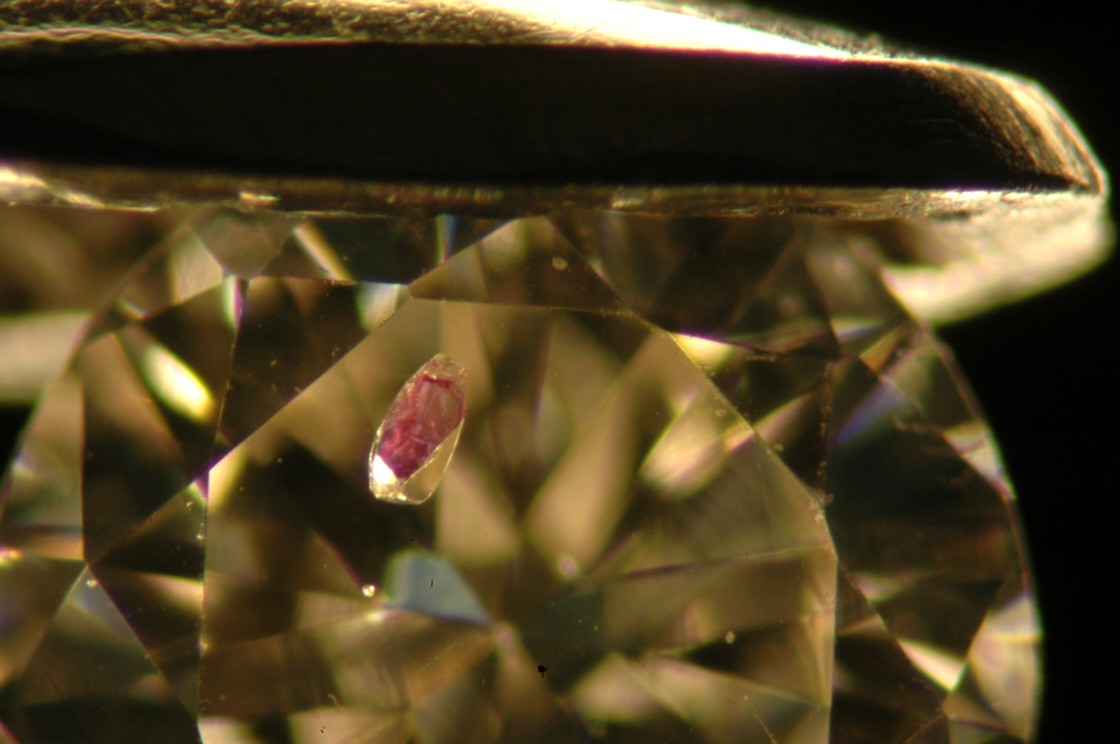 |
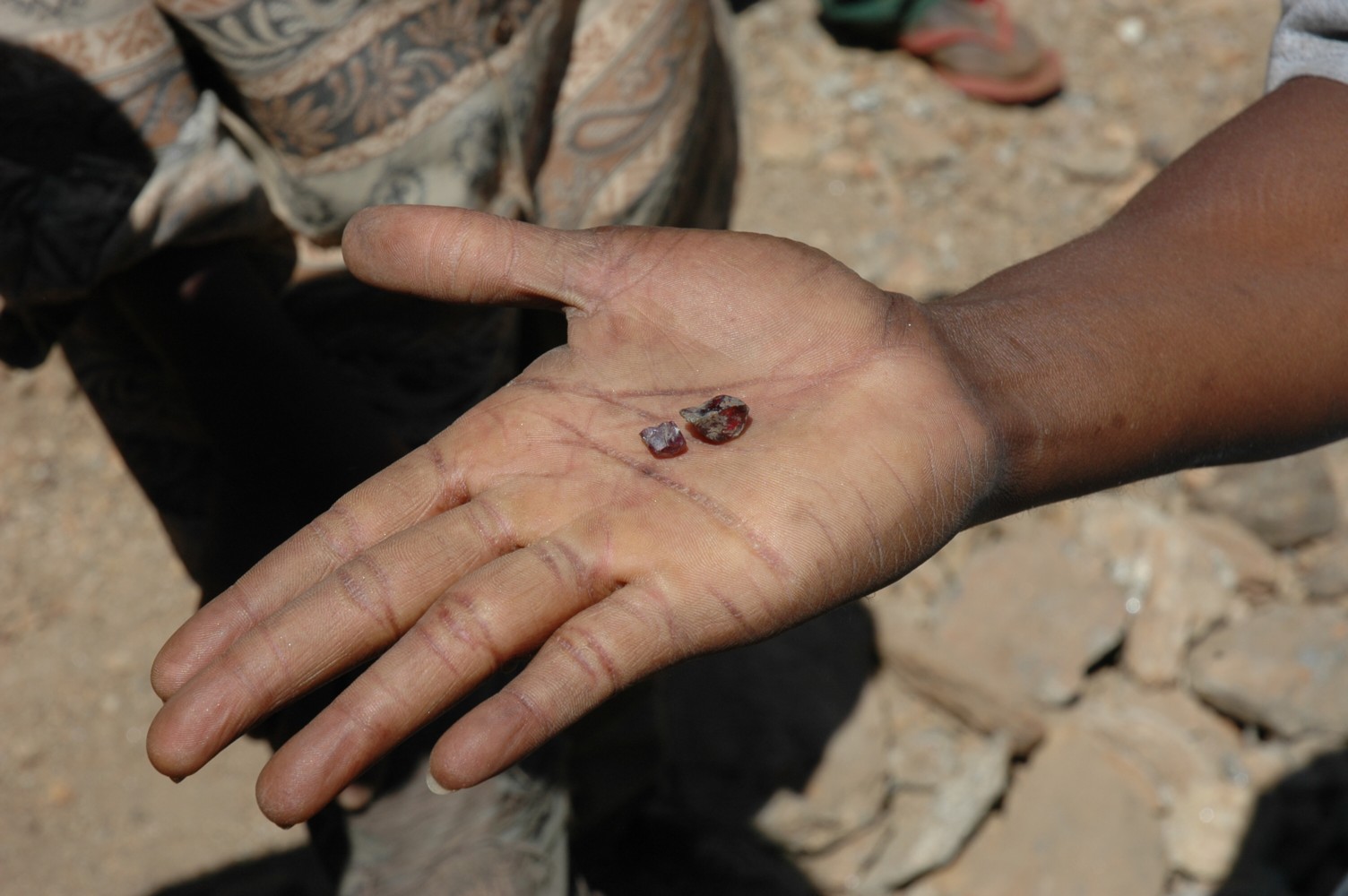 |
 |
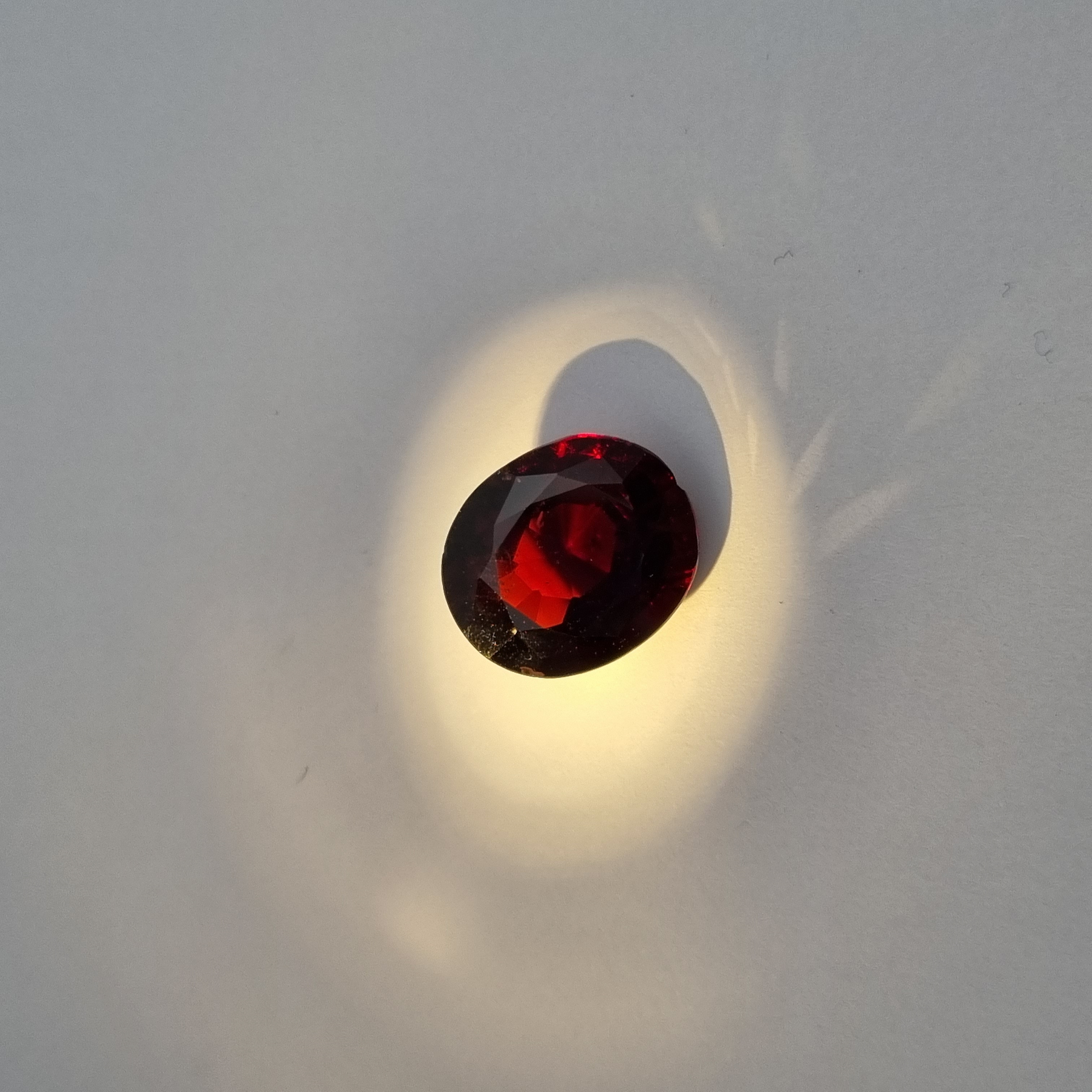 |
 |
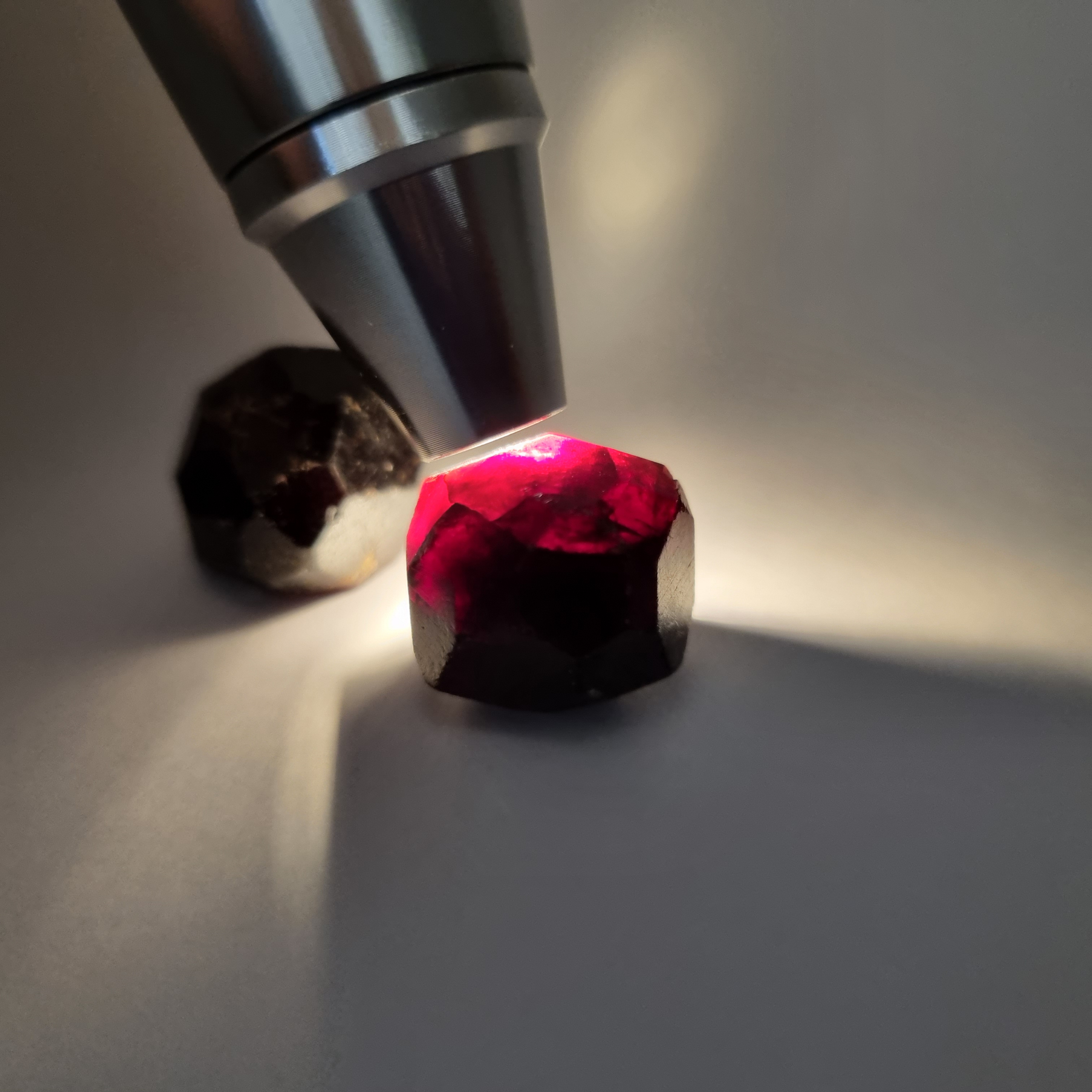 |
| Garnets may be found as inclusions in diamonds. |
Two pieces of red garnet on a miner’s hand, Kangala (Africa). |
An approximately 5 carats Malaya Garnet (Umba Valley, Tanzania) showing an orangy-red colour. |
Almandine Garnet, 10.59ct, showing strong red colour under incandescent light. |
Two pieces of rough garnet from China, showing Rhombic dodecahedron crystal habit. |
When light is shone on the crystal shown in picture above, the crystal shows a strong red colour. This material is considered a translucent gem. |
Tourmaline is a chemically sophisticated mineral, but due to that, this gem occurs in more colour and colour combination than any other gemstones. With so many colours, comes many trade names such as Rubellite for red/pink tourmalines, Indigolite/Indicolite for blue tourmalines to name a few. Among them all, the most recognised varieties of tourmaline are the Paraiba, neon blue or green, and Watermelon tourmaline which combines red and green.
Rubellite is mainly coloured by manganese, depending on the concentration the colour vividness varies. Eye clean red tourmaline can be rare as almost always they would have some form of inclusions.
Apart from its ridiculous range of colours, tourmaline overall is a rather decent stone. Some varieties often form with an exceptional clarity, and by adding a human touch (cutting and polishing) to it, it could turn out to be a fine cut gemstone beaming with vivid colour and sparkle.
 |
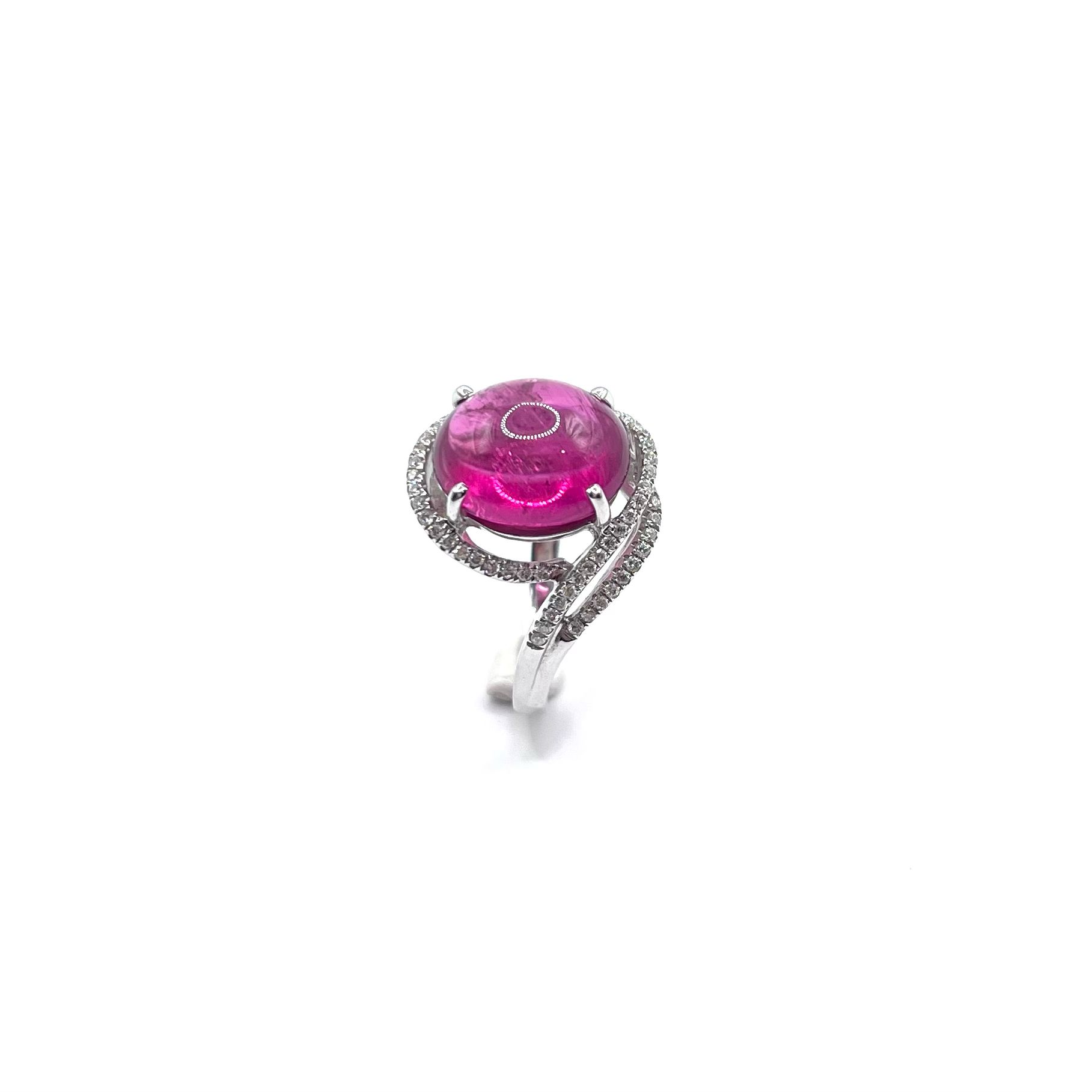 |
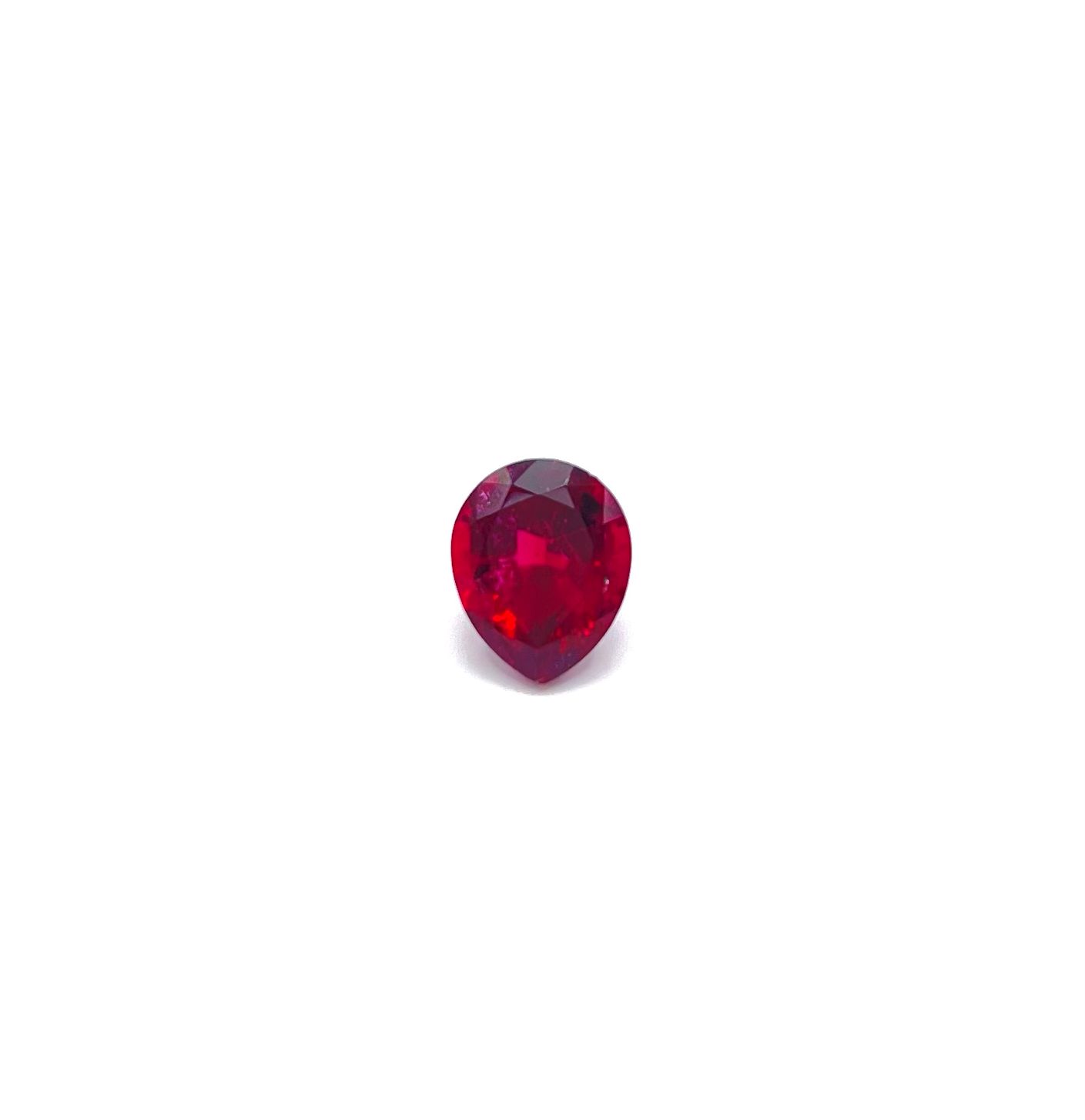 |
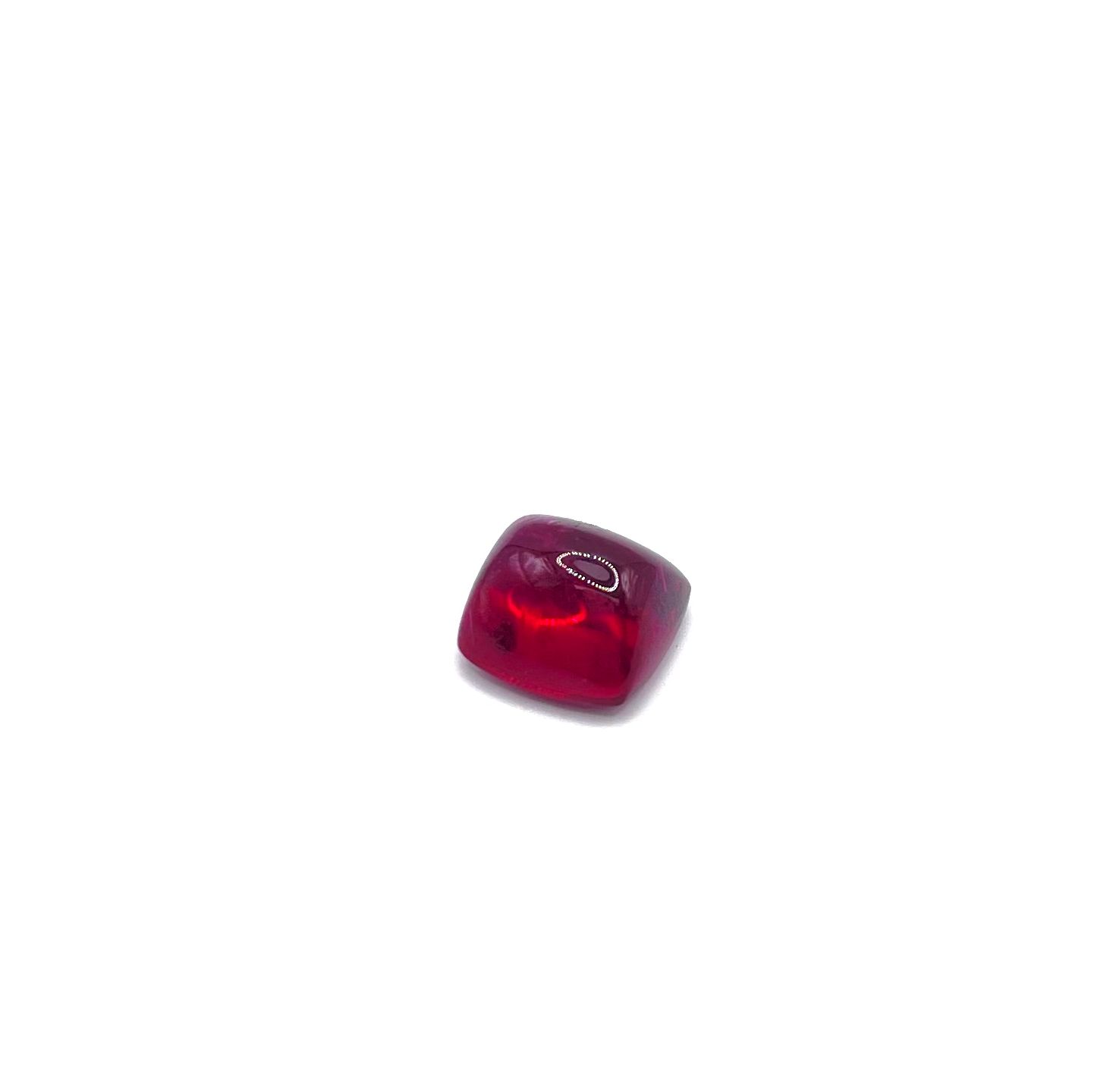 |
 |
|
Bi-colour red/pink tourmaline pendant set in 14k yellow gold. Very often, the colour of tourmalines may come as a combination of two different colours, or two shades of the same colour. |
A cabochon 5.52carat pink tourmaline set in 18k white gold and diamonds. Red or pink tourmalines are classified as Type III clarity. This means that the clarity tends to have visible inclusions. |
An exceptionally red coloured tourmaline, also known as “rubellite”. Rubellite without inclusions are very rare. |
a. An 18 carats Rubellite cut in “sugar-loaf” shape. | b. The same rubellite as in (a) seen from a different direction. Notice that the colour is more purplish in this direction. This effect is described as “pleochroism”. |
Officially the oldest mineral ever found aged at 4.37 billion years old, zircon is one resilient gemstone. They have been used as a gemstone for thousands of years for its high refractive index, hence its good brilliance and dispersion. Despite being known more as a diamond simulant in its colourless state and abundance, gem-quality zircons are rare. They are also the main ore for zirconium.
Unfortunately for natural zircon, it is still quite unknown in the market because it is often misunderstood as cubic zirconia - a man-made material, for their somewhat similar name. Although zircon is relatively soft when compared to other transparent gemstones at 6.5 Mohs, large gemmy zircon remains a collectable stone. Zircons are found in a range of colours starting from colourless, yellow, brown, orange, green, blue, and red.
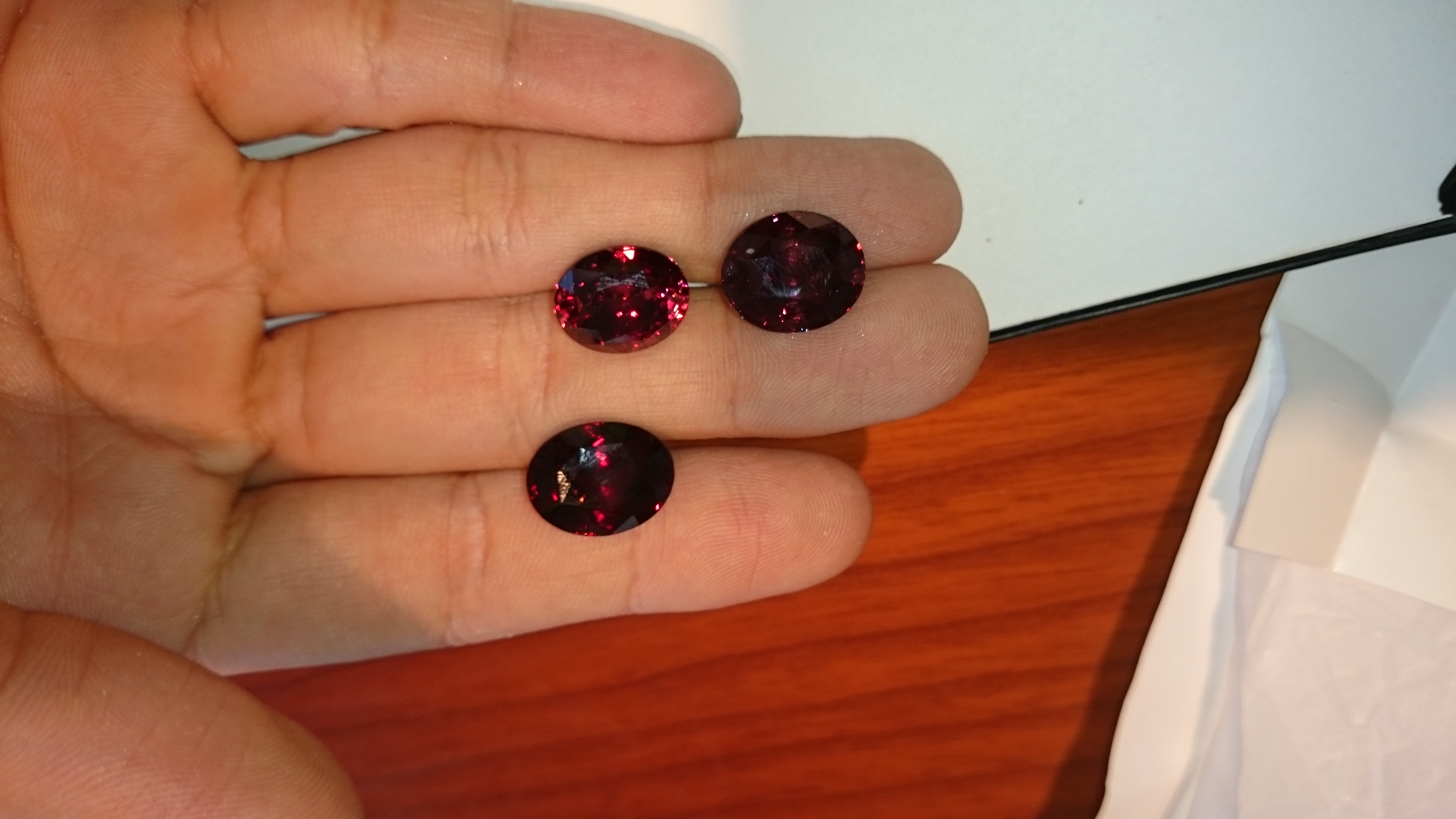 |
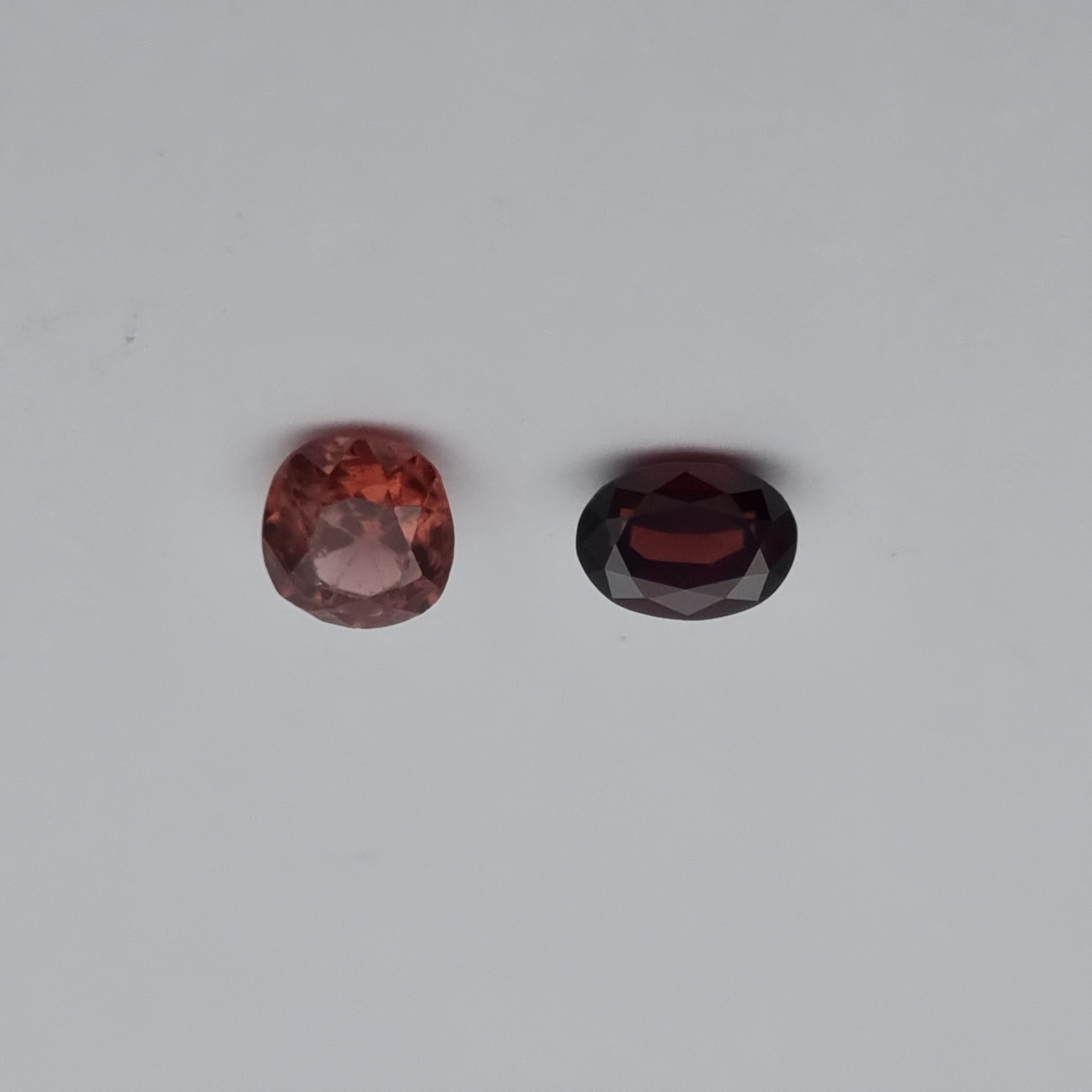 |
 |
|
Three pieces of red zircon, in the range of 10 carats to 20 carats. |
Two pieces of zircons close to being red in colour. These are generally described as reddish-brown, where brown is the primary colour. |
The same two pieces of zircons seen under incandescent light. Notice that the “red” in the zircons are more pronounced under this light source. |
Undoubtedly, red diamonds are the definition of rare and the fascination of this gem is through the roof. When you incorporate both of those factors together, you end up with an extremely expensive gemstone. Before Argyle mine came online in 1987, GIA only reportedly graded around 30 reddish diamonds, and none of them have a colour grade of “pure red”.
Although Argyle consistently produced pink and red diamonds for the past 30 years, most well-known red diamonds actually come from Brazil, like The Hancock Red, and The Moussaieff Red which is the largest of its kind at 5.11ct.
It has all the quality of any diamond: hardness, luster, brilliance, dispersion. Unlike most gemstones, its colour is triggered by the geological stress resulting in the displacement of carbon atoms in its crystal lattice. Call it a structural defect, but a blessing in disguise, it selectively absorbs light spectrum and transmits red.
 |
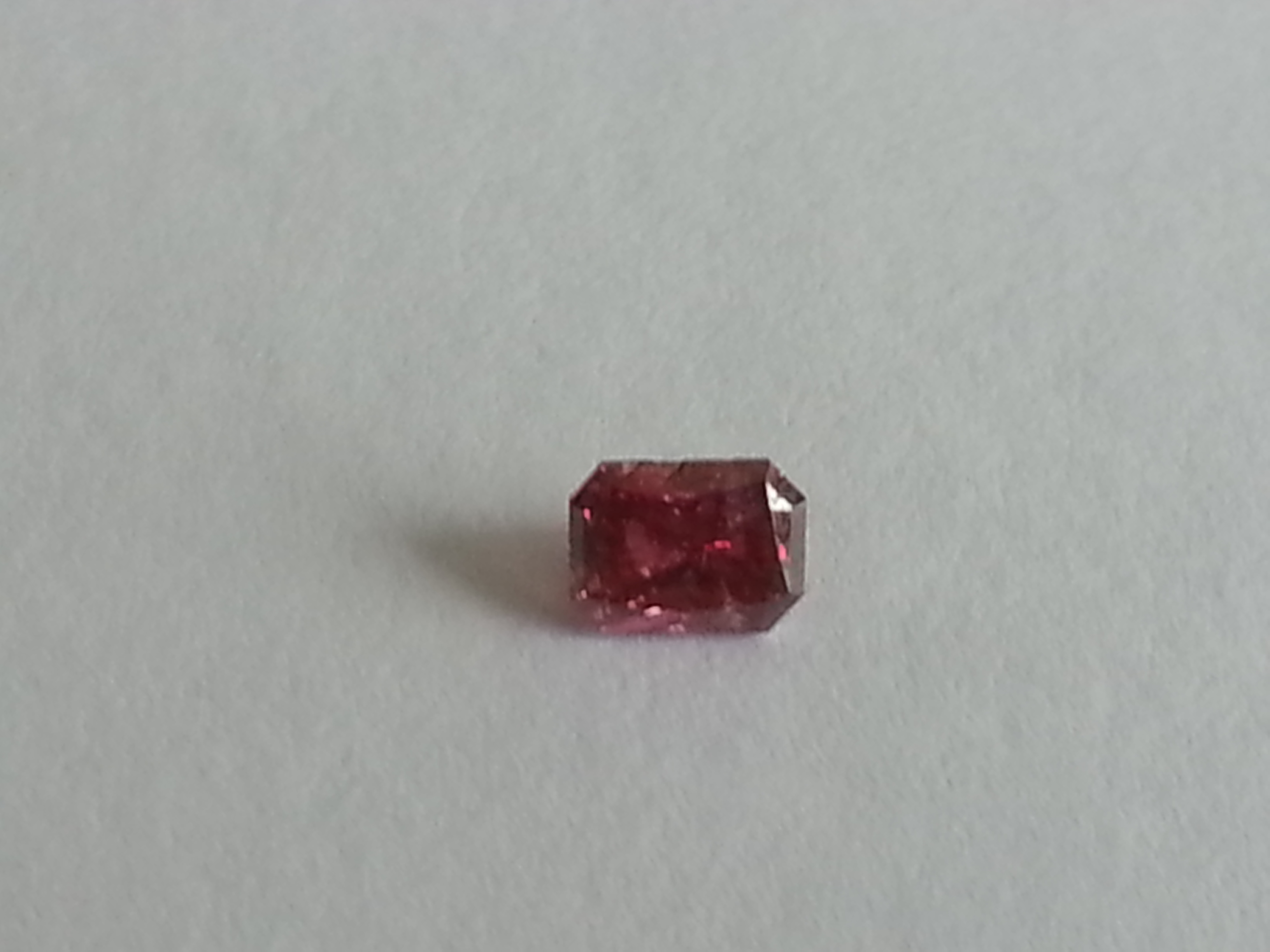 |
|
An exceptional rare piece of red diamond from Argyle. Most coloured diamonds come with a secondary colour, e.g. pinkish-red or purplish-pink. This piece of 0.29carat natural fancy red diamond is considered to have a pure colour since there is no secondary colour. |
|
An extremely rare mineral and even more so as a gemstone, its only source in Utah is no longer producing red beryl in the industrial level. Not to mention most of its specimens were not gem quality enough or too small to be faceted. According to statistics, for every ton of ore extracted only 0.50ct of facetable red beryl is yielded from 1976 to 1994. After 1994, it dropped to 0.25ct per ton.
As its name suggests, this mineral belongs to the beryl family which technically siblings to emerald, aquamarine, morganite and so on.
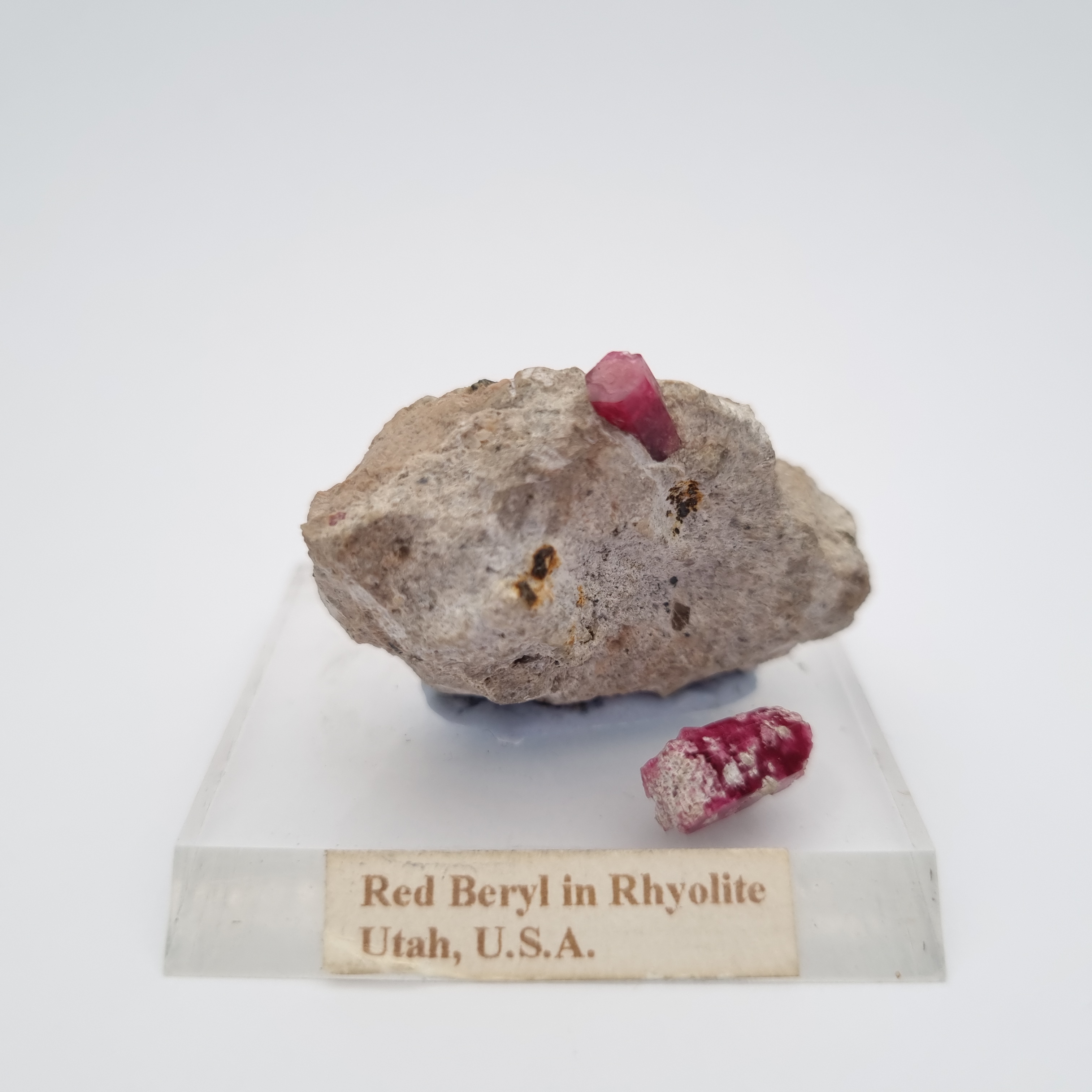 |
 |
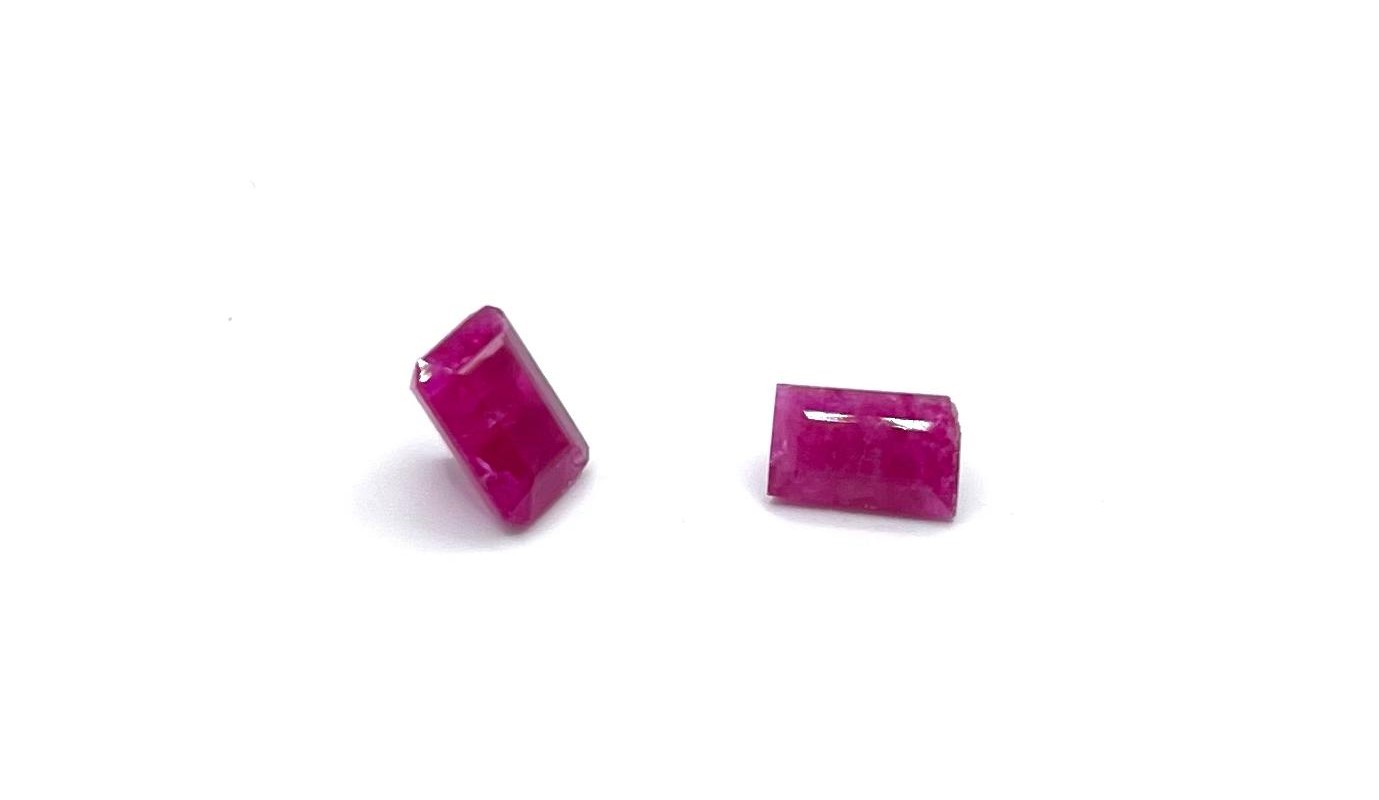 |
| Red beryl crystal in rhyolite from Utah (USA). Note the prismatic habit (i.e. longish shape) and a hexagonal cross-section. | A rather transparent red beryl crystal specimen displayed at a gem collector’s office in Israel. |
Two pieces of faceted red beryl, approximately 0.7 carats and 0.4 carats. Clean and transparent red beryls above 0.5 carats are rare and hard to come by. |
On this earth, there are more coral recorded species than mineral species. Different coloured corals are also widely used in jewellery such as white, blue, black, orange, pink, and of course, the highly precious red. It may sound cruel and not environmentally-friendly, one comforting fact of red corals is that they are not listed in CITES (Convention on International Trade in Endangered Species of Wild Fauna and Flora), mainly due to them being less susceptible to global warming as they live in greater depths but still a threat to over-harvesting. The Corallium coral varieties are some examples of red corals, and some of them are native species for respectives sea and ocean namely Mediterranean Sea, popular in Italy, and Pacific Ocean famous in Japan and Taiwan.
 |
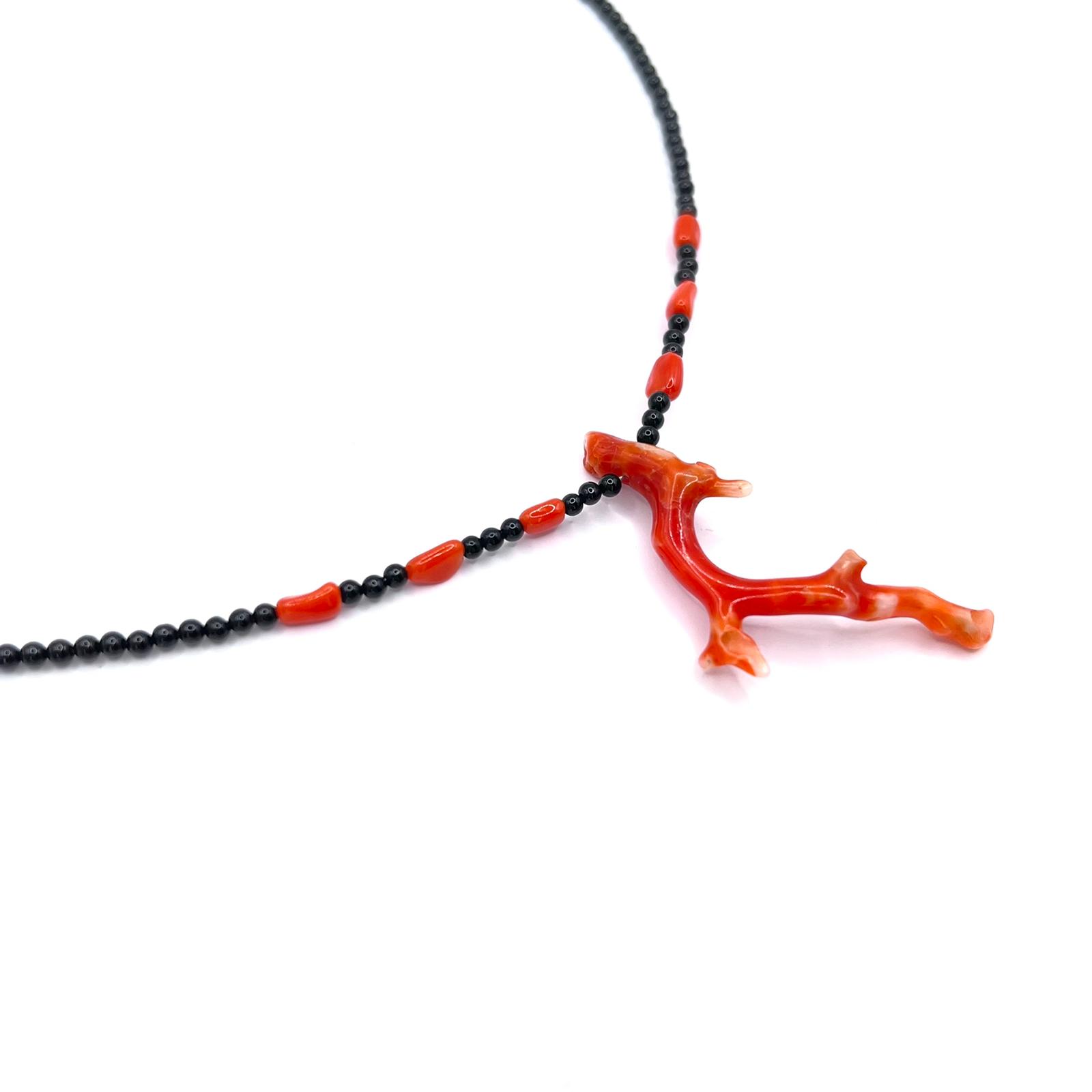 |
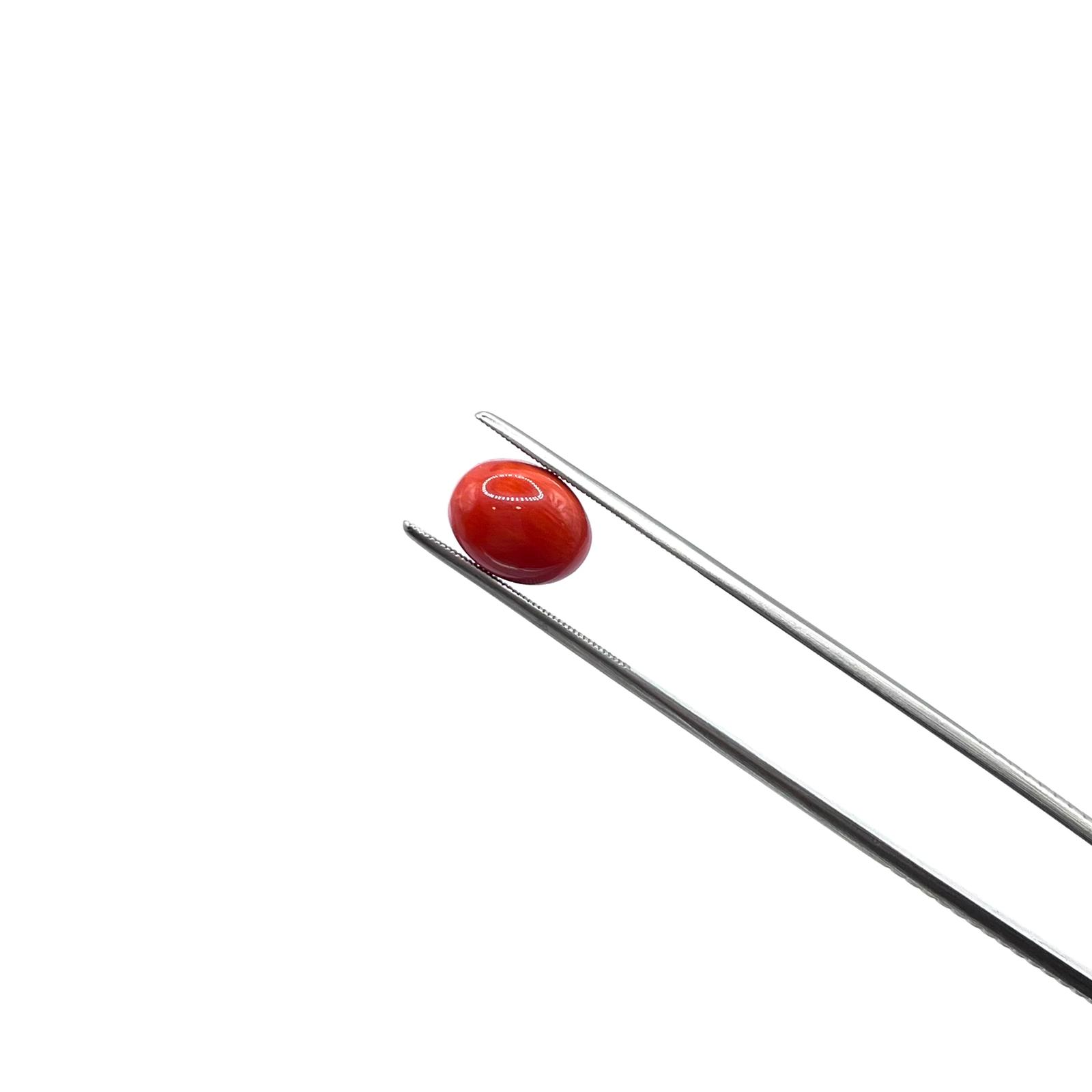 |
|
A coral from Taiwan with branches in its original form without polishing. |
A polished red coral from Taiwan strung with onyx (black) and coral (red) beads. |
Cabochon cut natural red coral. |
For bead, cabochon, and slab lovers, you definitely will recognise this gem. Majority of rhodochrosite around the world displays distinctive pink and white concentric bandings when polished, an appearance quite similar to polished green malachite. Although it only has a hardness of 3.5, along with perfect cleavages in three directions, it does not deter collectors from its beauty.
Rhodochrosite rarely crystallises into well-formed transparent crystals, therefore there is a huge demand for them. Most notably, red gemmy specimens from Sweet Home Mine, Alma, Colorado that are sometimes faceted into gemstones, or otherwise kept in its original stunning rhombohedral shape.
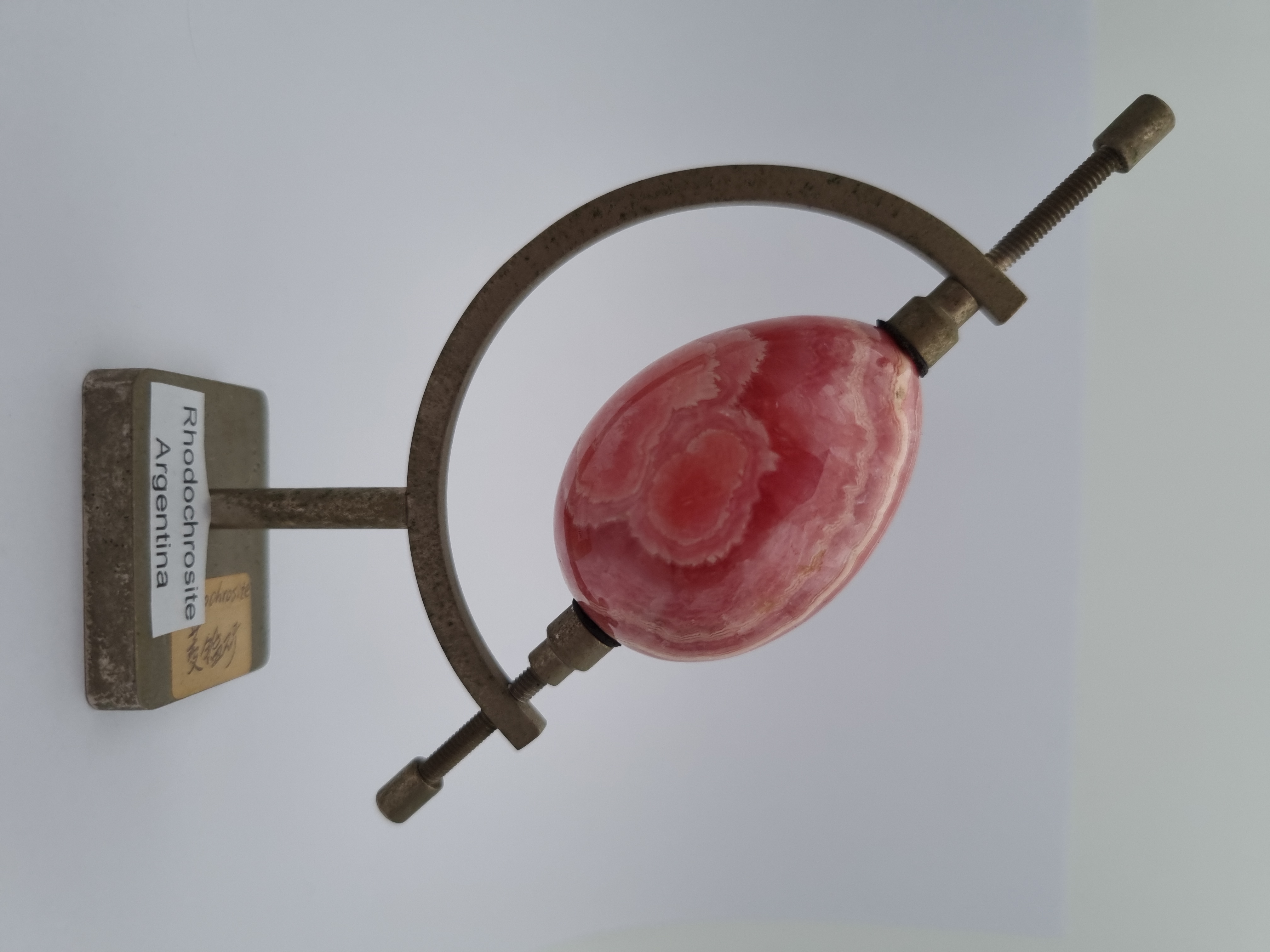 |
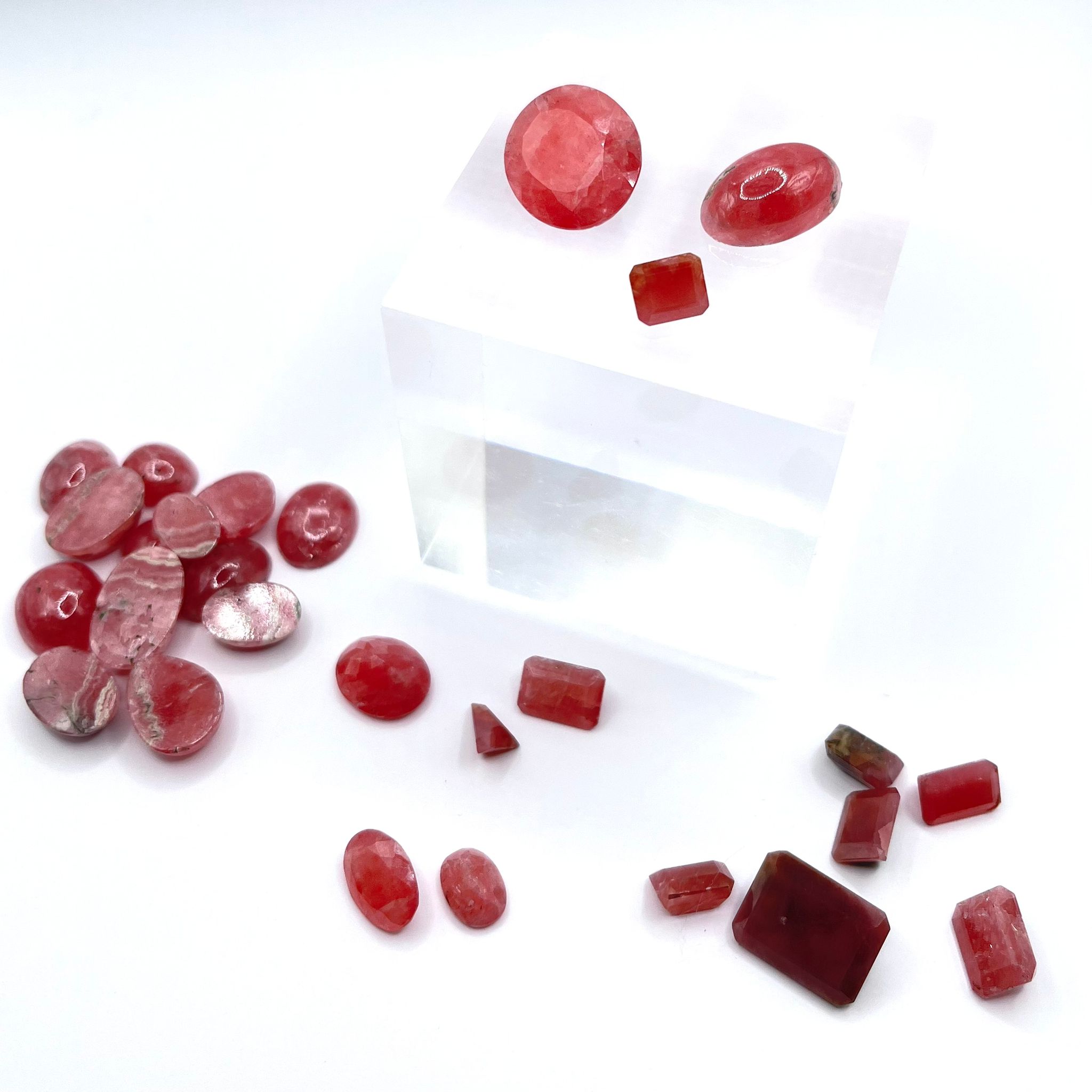 |
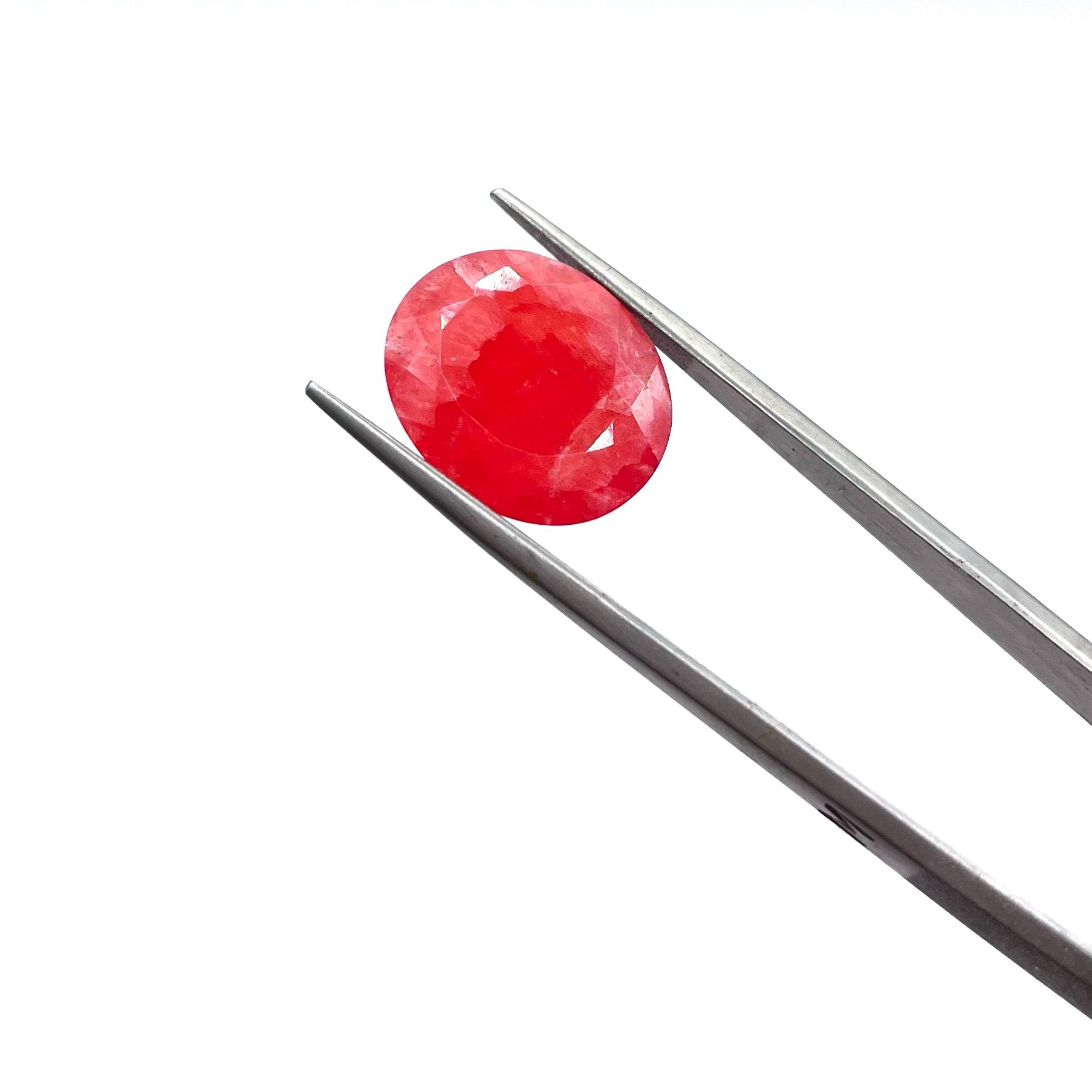 |
|
Rhodochrosite with white bandings, sometimes described as “bacon”. |
One lot of rhodochrosite cut en cabochon as well as faceted. Faceted gem materials tend to be more transparent than the cabochon materials. | An approximately 10 carat faceted rhodochrosite. Due to its wider range of refractive index (1.57 to 1.82), rhodochrosite’s lustre can range from vitreous (i.e. glassy-like surface reflection) to very bright vitreous. |
Both belong to the quartz family and they can be differentiated by their transparency: agate is translucent with concentric bandings, and jasper is opaque. Regardless, both are very common cryptocrystalline quartz.
The formation of agate and jasper starts with a pocket of air inside a rock. By chance, silica-rich solutions flow into the cavity and very slowly precipitate to a gel-state attached to the wall. Once it is fully evaporated, it crystallises to form agate. The whole process may continue multiple times until the cavity is fully occupied, and throughout different waves contains different compositions that causes the bandings we are all so familiar with. Red is a rather common colour due to iron, which is also an abundant chemical element on Earth.
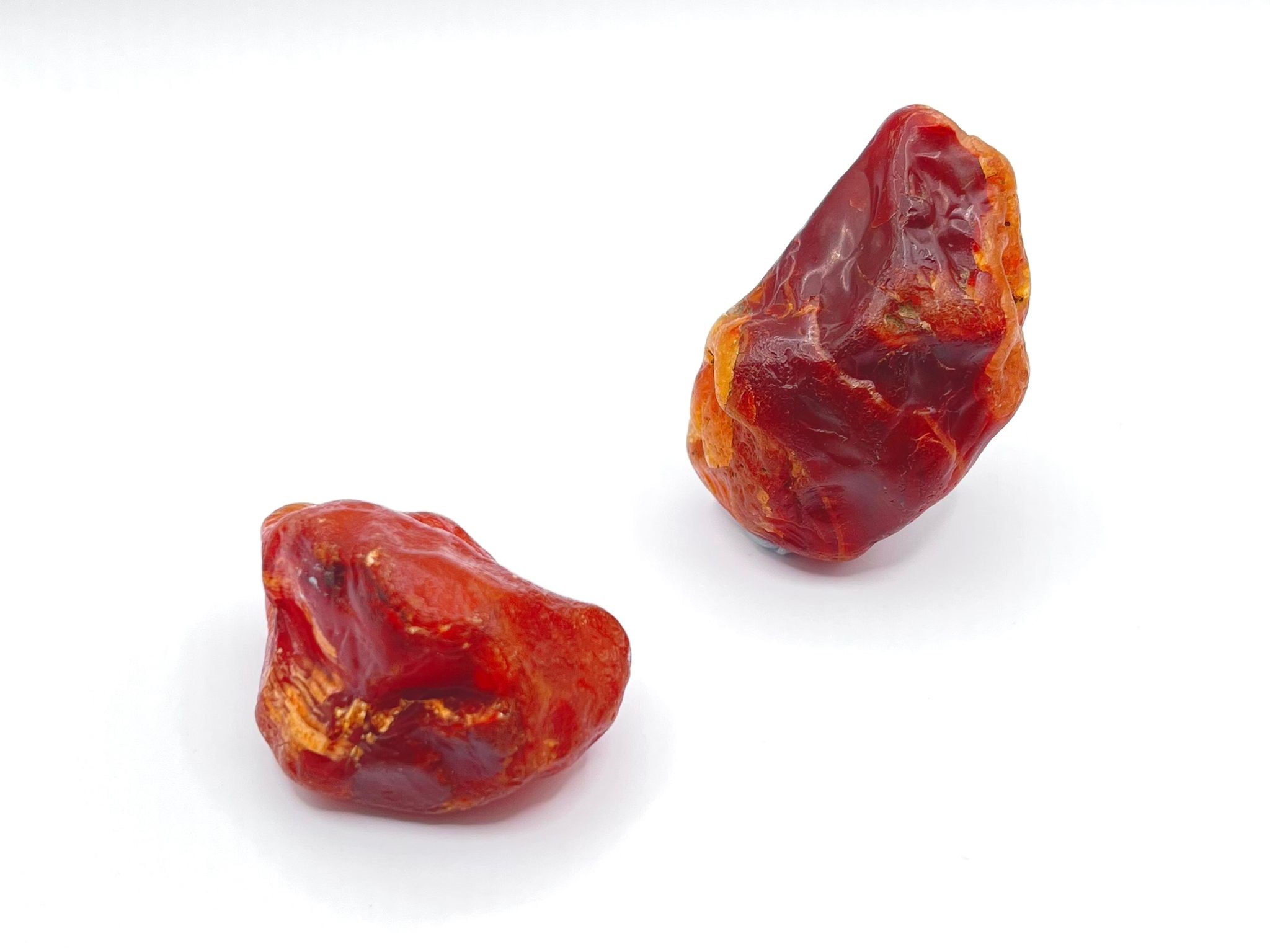 |
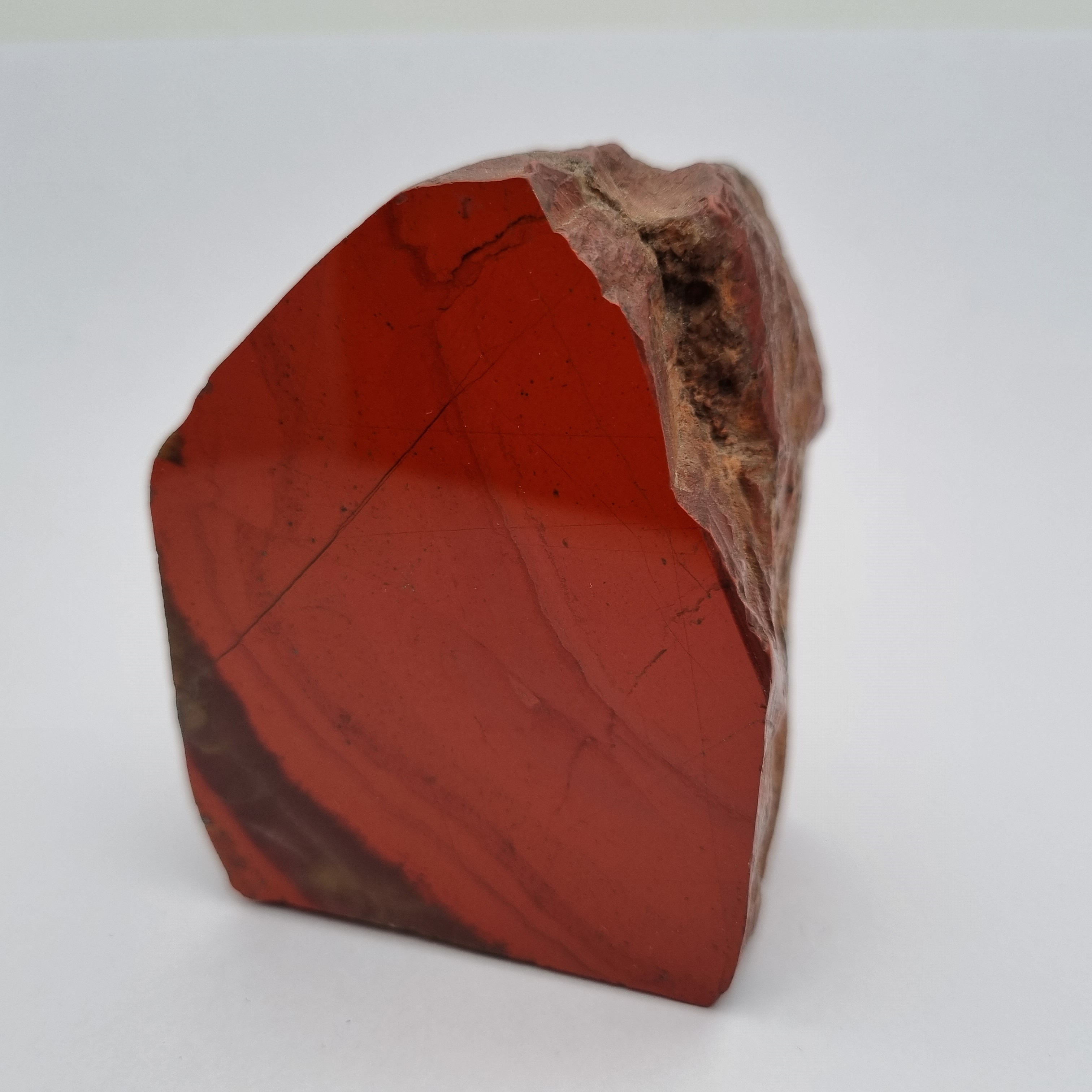 |
| Two pieces of natural rough red agate from Australia. Even though visually it may appear to be orangy in colour, it is considered a red agate due to iron as the colouring element. Most red agates in the market are dyed colour materials. Naturally red colour agates that look like rubies are considered rare and uncommon. |
A large piece of red jasper from Thailand. These gem materials are opaque most of the time. |
Acknowledgments:
Far East Gem Institute for the photos and specimens.
The Gem Museum for the mineral specimens.
